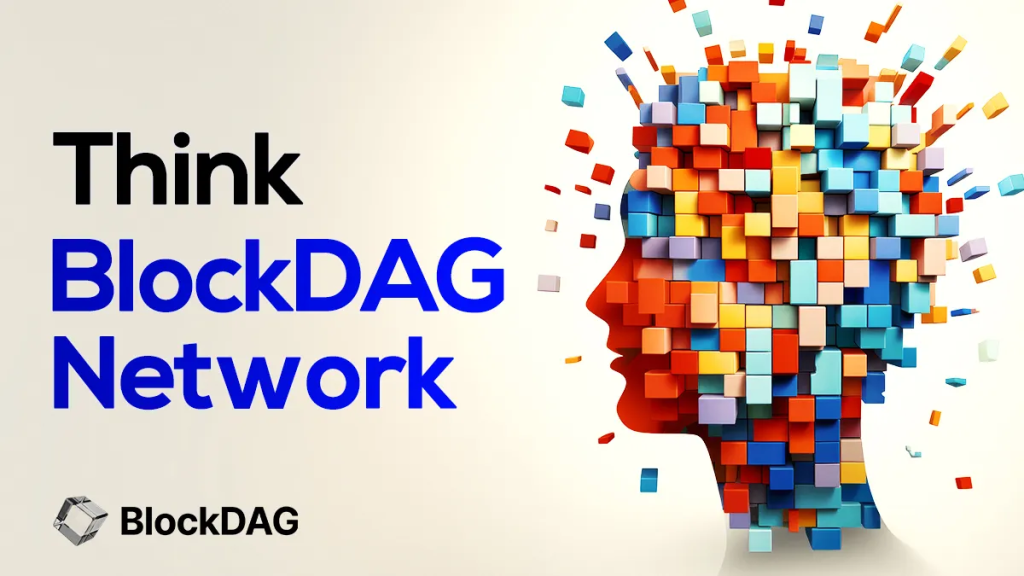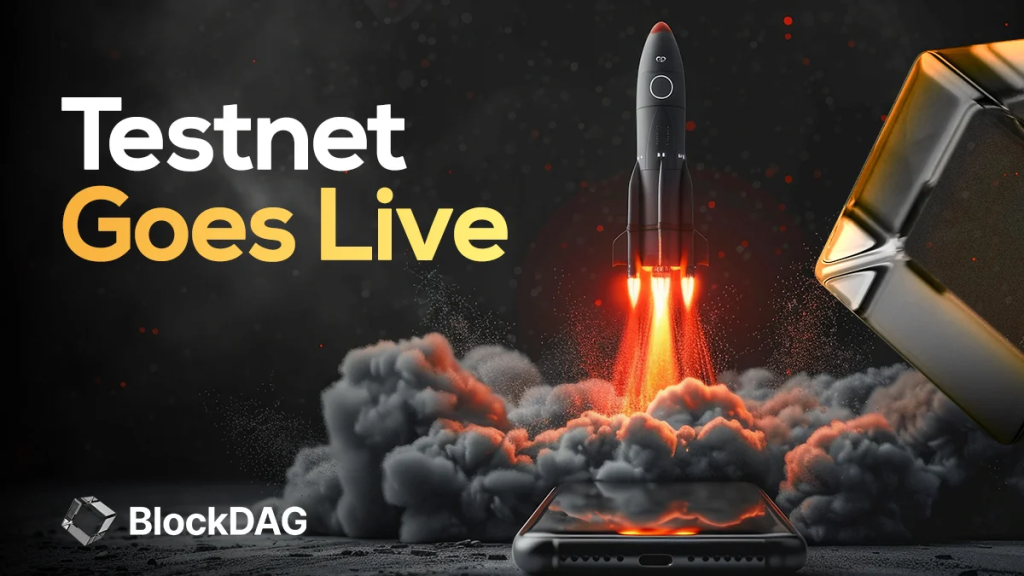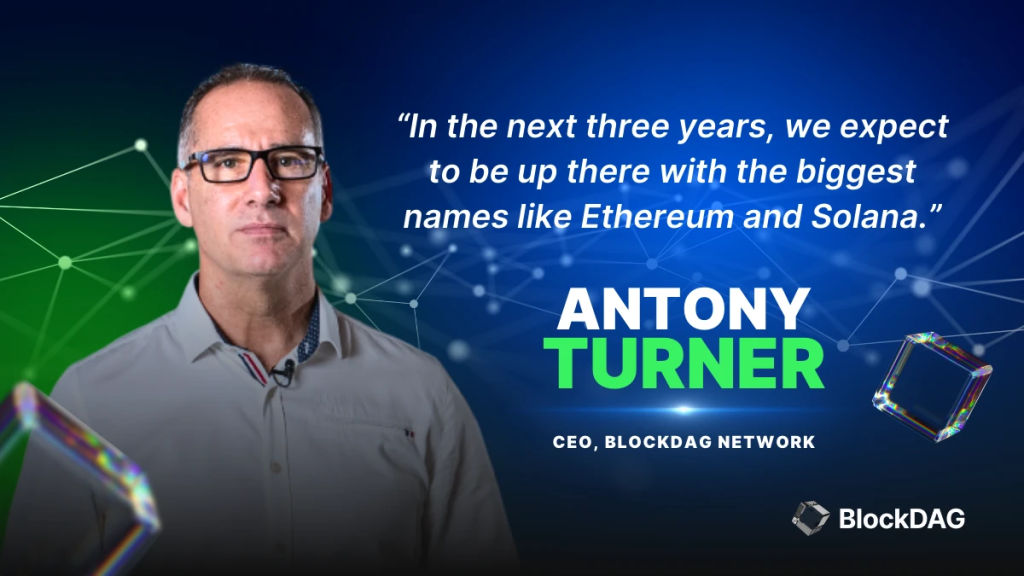Summary:
- BlockDAG’s unique structure: Allows concurrent processing of multiple blocks, forming a network-like architecture rather than a linear chain.
- Advantages of the technology: Increases transaction speed and scalability, addressing major limitations of traditional blockchains.
- Key players adopting BlockDAG: Companies like Phantom and IOTA are leveraging the blockchain technology for more efficient transaction processing.
- Impact on blockchain applications: Enhances the feasibility of large-scale blockchain solutions, making it ideal for high-volume use cases.
The Next Generation of Blockchain Technology
BlockDAG (Directed Acyclic Graph) technology is redefining blockchain with a pivotal shift in architecture. Unlike traditional blockchains like Bitcoin and Ethereum, which rely on a linear structure where blocks are added one after the other, BlockDAG creates a complex, web-like directed acyclic graph. This unique structure allows for multiple blocks to be mined and processed simultaneously, making it ideal for high-traffic applications by supporting significantly higher transaction throughput and reducing network congestion. For projects dealing with extensive transactions or time-sensitive operations, such as financial transactions, IoT (Internet of Things) data exchanges, and decentralized finance (DeFi), this enhanced speed is game-changing.
Designed to tackle the scalability challenges of traditional blockchains, BlockDAG is becoming the go-to solution for decentralized networks that require rapid processing and efficiency. By allowing multiple transactions and blocks to coexist and be processed simultaneously, it resolves the bottleneck problems associated with traditional blockchain designs. As the demand for decentralized solutions grows, the blockchain technology’s structure is likely to be increasingly adopted by industries that demand fast, scalable, and reliable transaction processing.
The BlockDAG Structure: How It Works
Traditional blockchains organize transactions in a linear sequence, which often leads to network congestion and slower transaction speeds as more users and applications join the network. In contrast, BlockDAG’s structure enables concurrent block creation, effectively allowing the blockchain to “branch out” in multiple directions at once. This parallel processing design significantly increases network throughput, making it highly effective for real-time applications that demand fast, uninterrupted processing of transactions.

In a BlockDAG setup:
- Concurrent Mining: Multiple miners can create and add blocks simultaneously without waiting for previous blocks to confirm. This drastically improves network efficiency and reduces the chances of bottlenecks in high-traffic situations.
- DAG Structure: Each block in the blockchain technology points to multiple others, forming a directional graph where data flows forward without any loops or cycles. This structure is key to faster transaction validation and avoids the sequential delays seen in traditional blockchains.
- High Throughput: BlockDAG can handle thousands of transactions per second, ideal for applications like IoT networks, micro-transactions, and DeFi platforms, where real-time responses are critical. This unique structure makes the blockchain technology highly appealing for various industries, enabling a blockchain network that remains responsive even under heavy loads.
By addressing the speed limitations of linear blockchains, BlockDAG’s architecture opens up new possibilities for decentralized applications, especially in high-volume, real-time environments.
Advantages of BlockDAG Over Traditional Blockchains
BlockDAG brings numerous advantages to blockchain applications, offering a level of scalability and efficiency that traditional blockchains struggle to achieve.
- Scalability: BlockDAG’s multi-parent structure allows it to process multiple blocks concurrently, ensuring that the network remains scalable even as transaction volumes increase. This scalability is particularly beneficial in industries with high transaction demands, like finance and supply chain management, where traditional blockchains often become congested. BlockDAG can help these industries maintain speed and efficiency as transaction loads grow.
- Reduced Confirmation Times: With BlockDAG, confirmation times are reduced significantly compared with traditional blockchains. This means users and applications can receive transaction confirmation more quickly, making it ideal for time-sensitive applications like digital payments and real-time data sharing. In many cases, BlockDAG can cut down confirmation times by over 50%, offering a smoother and faster user experience in applications where timing is critical.

BlockDAG Network - Enhanced Security: BlockDAG’s decentralized structure increases resilience against 51% attacks. Unlike traditional blockchains where a single chain can be taken over, BlockDAG’s multiple paths make it harder for attackers to control the network, bolstering the security profile and trustworthiness of the system. This level of security is particularly important in financial and confidential applications, where users require assurance that the network cannot easily be compromised.
- Energy Efficiency: BlockDAG’s design also focuses on sustainability. Unlike Proof-of-Work blockchains, which require substantial energy, BlockDAG consumes less energy, making it an eco-friendly alternative. As the blockchain industry moves towards greener solutions, BlockDAG’s reduced energy consumption aligns with global environmental priorities, providing a sustainable solution that supports decentralized networks without the high environmental cost.
Leading Projects Utilizing BlockDAG Technology
A few pioneering projects have already adopted BlockDAG to leverage its scalability and efficiency, setting the stage for widespread industry adoption.
- PHANTOM: This consensus algorithm is specifically designed for BlockDAG networks, enhancing the ordering and processing of blocks to maximize throughput. PHANTOM has proven its effectiveness in high-speed financial applications, where fast transaction processing is critical. By optimizing the BlockDAG structure, PHANTOM demonstrates the power of concurrent processing in real-world applications.
- Spectrecoin (XSPEC): A privacy-focused cryptocurrency, Spectrecoin uses BlockDAG to enable secure and anonymous transactions. The structure of BlockDAG aligns well with privacy-focused applications since its network supports multiple paths, making tracking transactions more challenging. Spectrecoin is a powerful example of BlockDAG’s versatility, offering security and confidentiality in an increasingly privacy-conscious world.
- Nano: Known for its zero-fee transactions, Nano applies BlockDAG principles to create an efficient digital payment solution. With near-instant payment processing, Nano’s network allows users to make transactions that are as fast as traditional digital payments but without the associated costs. This makes Nano practical for daily transactions, further showcasing BlockDAG’s utility in developing efficient and user-friendly decentralized finance solutions.
These projects highlight the flexibility of BlockDAG across diverse applications, from privacy coins and high-speed financial services to payment networks.
The Future of BlockDAG in Blockchain Ecosystems
As demand for scalable, efficient blockchain networks continues to grow, BlockDAG is well-positioned to meet these needs across various sectors.
- BlockDAG’s structure is particularly suited to IoT, where countless devices interact and exchange data in real time. BlockDAG’s scalability enables it to handle this vast data stream efficiently, making it ideal for applications requiring fast, reliable data transfer between devices. The adaptability of BlockDAG to manage high volumes of IoT data could revolutionize the way devices communicate, making IoT systems faster and more integrated.

- DeFi platforms depend heavily on low-cost, fast transactions to operate effectively, and BlockDAG’s high scalability and efficiency could accelerate its adoption in DeFi applications. With transaction volumes rising in DeFi, BlockDAG’s structure could provide the necessary framework to process these transactions rapidly, maintaining system stability and enhancing user experience. This scalability makes BlockDAG an ideal foundation for the next generation of DeFi platforms.
- Transparency and traceability are essential in supply chain networks, where every step must be accurately tracked. BlockDAG’s ability to manage high data volumes can improve transparency and efficiency, transforming industries that rely on seamless data processing, such as logistics and retail. The improved traceability provided by BlockDAG can help supply chains become more efficient and responsive, aligned with industry needs for accuracy and real-time updates.
Micropayments and Streaming: The fast confirmation times offered by BlockDAG are ideal for supporting micropayments and real-time streaming services, allowing for seamless, low-cost transactions. For content creators and media platforms, BlockDAG offers a reliable, fast method of processing payments and streaming transactions, making it well-suited to the demands of today’s digital economy. The ability to handle these transactions quickly and at a low cost opens up new possibilities for decentralized media and payment systems.
Challenges and Criticisms of BlockDAG
While BlockDAG offers transformative benefits, it faces several challenges that need to be addressed to ensure its long-term success.
- Complexity: BlockDAG’s architecture is more complex than traditional blockchain systems, which can make it challenging for developers to implement effectively. The structure of a DAG requires specialized skills and knowledge, often creating a higher barrier to entry for developers. As more resources and expertise are devoted to DAG-based solutions, overcoming this complexity will be critical for widespread adoption.

- Network Growth Management: As the BlockDAG network grows, maintaining consensus in the DAG structure can become increasingly difficult. This growth demands constant innovation to ensure the network remains stable and secure. For BlockDAG to achieve mainstream adoption, its architecture will need to evolve to handle expansion while maintaining security and efficiency.
- Adoption Hurdles: BlockDAG is relatively new, and widespread adoption will require significant technological advancements and increased public awareness of its benefits. Many industries are still unfamiliar with its advantages over traditional blockchain, which means education and promotion will be essential to attract users and developers. As BlockDAG continues to demonstrate its effectiveness in real-world applications, overcoming these adoption challenges will be vital to its future success.
In short, BlockDAG represents a scalable, efficient, and secure alternative to traditional blockchain, with promising applications across high-demand sectors like DeFi, IoT, and supply chain management. As the need for decentralized networks grows, BlockDAG’s unique approach provides a path forward that traditional blockchains cannot match.
Evolution of Blockchain Technology
BlockDAG technology addresses critical limitations of traditional blockchain, offering a scalable, efficient, and secure alternative. Its structure is particularly suited for applications in high-demand sectors like DeFi, IoT, and supply chain management. As more projects begin to adopt this technology, BlockDAG is poised to play a central role in the evolution of blockchain.
With decentralized networks becoming essential to the future of Web3, BlockDAG’s unique approach to data processing offers a path forward that traditional blockchains cannot match.

